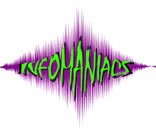|
SQL3D
is Infomaniacs' technical architecture and schemata that
builds on and extends industry standards to enable applications
using 3D data to interoperate with each other, support multiple
users in sharing 3D data without conflict, seamlessly integrate
3D, 2D, multimedia, temporal, and alphanumeric data, and exploit
the strengths of distributed data and object management.
SQL3D
integrates real-time 3D content into traditional data management
systems and application platforms and provides such content
with persistence, multi-user concurrency and consistency, durability,
security, scalability, and distributivity.
Read
the full presentation of SQL3D.
|
Spatial
(3D) User Interface to Data and Objects
The
2D Graphical User Interface opened up the world of computing to
tens of millions of users by employing graphical representations
of data and computer functions, based on the easily understood desktop
metaphor. Today, a new group of users, numbering perhaps in the
hundreds of millions, is being attracted by the widespread availability
of seemingly limitless resources on the Web, and supported by the
ongoing convergence of computers and consumer electronics. This
new user population, driven by needs and goals that are also new,
demands a new user interface paradigm, one that is even more natural
and direct than the GUI. The Spatial User Interface is the killer
app of interactive 3D. This project will explore 3D User Interface
design alternatives that are consistent with technology likely to
be available to users in the near future.
|
|
Presentations
as Adventures
Presentations
are how we communicate information that is not simple, where ideas
form a structure that must be developed. Powerpoint and HTML have
provided a baseline for presentations, be they one-on-one, in the
boardroom, or on the web. However, this lowest common denominator
approach has failed to make presentations any more communicative,
informative, captivating, or entertaining - presentations just all
look alike now, only adding to the monotony.
While
presentations were becoming more uniform (and more boring), consumer
games and educational titles exploded, becoming more informative
and exciting, through the unflinching exploitation of multimedia,
interactive 3D, and multi-player participation. Until recently,
the time and expense associated with game development has prohibited
the preparation of presentations of a similar nature.
The
Presentations as Adventures Project will determine if current
and forthcoming technologies can make the preparation of "game
style" presentations straightforward and inexpensive, and if so,
what technologies should be used and what others still need to
be developed. Beyond technology issues, the project will explore
how the storytelling techniques of myth and metaphor, so successfully
employed in cinema, can be applied in the preparation of adventurous
presentations.
|
|
inVironment
As we
prepare to enter the third millennium we see countless databases
connected in a web, available to millions; consumer electronics
converging with high performance computers; user interfaces taking
on the qualities of virtual realities. But what attention has been
placed on the other side of the interface, on the physical settings
in which humans participate in digital reality? Contemporary offices
and living rooms, strikingly similar in structure to dwellings of
a millennia ago, were never designed with digital reality in mind.
The inVironment Project explores the "other side" of the interface,
seeking to design a physical infrastructure to support both the
humans who inhabit digital reality as well as the machines that
generate it.
|
|
Mindwaves
Electronic
and photonic technologies for enhancing the creativity of groups.
|
|

